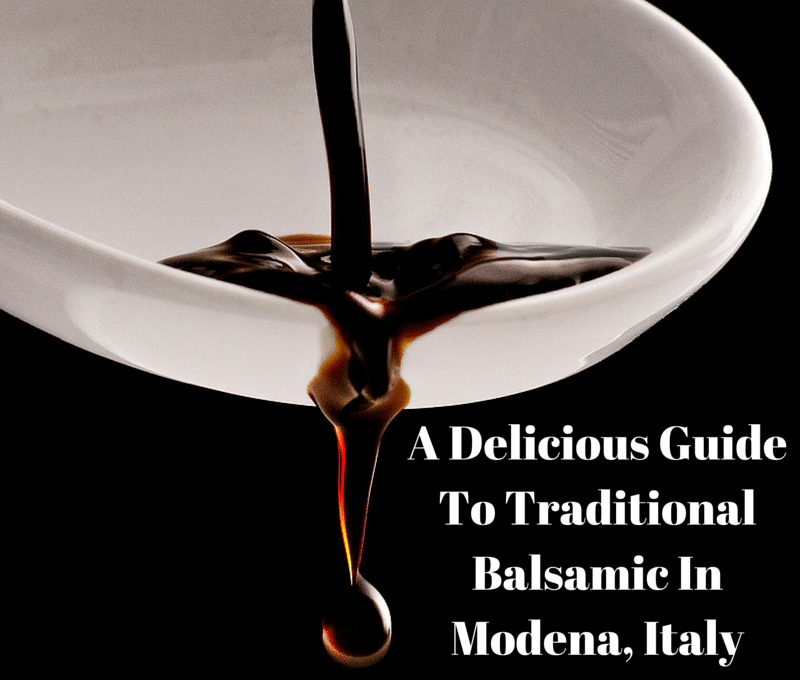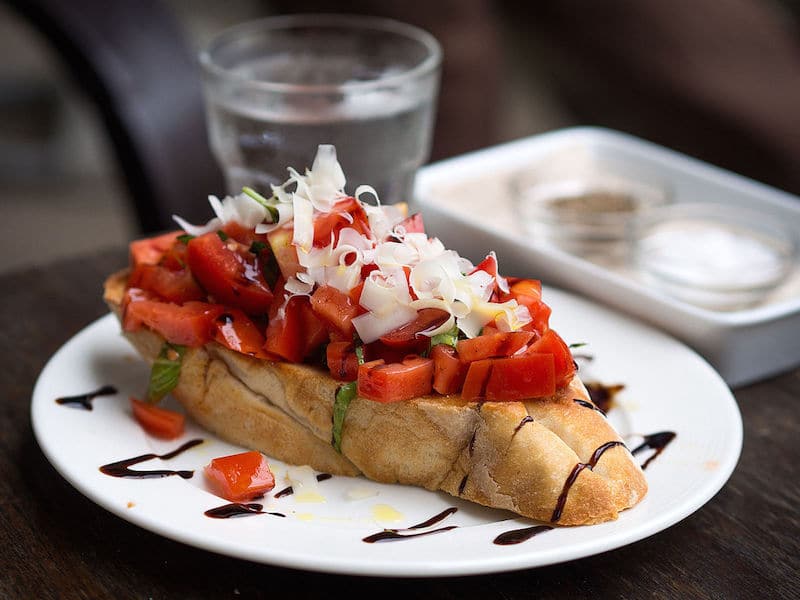
By Elizabeth Rudd of Compass & Fork
The Italian town of Modena is associated with quality balsamic vinegar. But what does the label mean, and how can you really tell the quality of vinegar? The answers might surprise you.
Traditional Balsamic Vinegar Of Modena
There is vinegar, and then there is real or artisan vinegar, also known as Traditional Balsamic Vinegar of Modena.
Europe’s protected designation of origin (DOP) identifies a product as being from a certain region, made a certain way and adhering to a high quality standard. It is an artisan product usually made by hand in limited supply.
Traditional Balsamic Vinegar (Acetaia) of Modena is one of Italy’s DOP products. There is a lot of vinegar labeled as balsamic vinegar and labeled as Italian or from Modena, but that is not the artisan product.

The Traditional Balsamic Vinegar of Modena — as in the DOP product — must:
- Be made with white Trebbiano and red Lambrusco grapes
- Contain one ingredient: grape must, the reduced grape juice from the above grapes
- Be aged in one of six types of barrels: cherry, mulberry, juniper, oak, ash or chestnut
- Be aged for a minimum of 12 years
- Be certified to taste and quality by a judging panel from the DOP Consortium
The Consortium — the cooperative body regulating production — bottles the vinegar only if it meets these criteria. The 100 milliliter bottle with its distinctive shape is the only bottle used for the artisan product. The only variance is the front label, which denotes the producer and the color of the cap; white for 12 years or more and gold for 25 years or more.
Do you know the difference between traditional and commercial #balsamic in #Modena? #Italy Click To Tweet
Total production is only about 55,000 100-milliliter bottles per year. A large producer might produce about 2,000 bottles in a year.
So, What Are You Buying At The Grocery Store?
Grocery stores and local gourmet food shops typically sell commercial vinegar. What’s confusing is that for a bottle to be labeled “from Modena” only one step in the process has to be performed in Modena, and it can be to any quality standard. Sorry budget travelers; but when you see a moderately-priced balsamic vinegar from Modena, it’s likely just bottled there. The product in the bottle is wine vinegar with thickeners added to make it the color and consistency of Traditional Modena Vinegar.
The word balsamic derives from the word “balm,” as in a soothing remedy. Originally vinegar was made and used as a tonic or balm, typically for digestive complaints. Today vinegar, particularly organic apple cider vinegar, holds the same benefits.

Changing With Age
Real vinegar is quite sweet, though the wood it’s aged in alters the taste substantially. Vinegar aged in juniper wood is peppery, while vinegar aged in cherry wood tastes sweet. Meats are perfect with juniper vinegar and the cherry vinegar is perfect for salads and sweets.
The artisan product, which takes a minimum of 12 years to craft, is at a much higher price point. Think about €40- €80 (~$45 to $89 USD) for a 100-milliliter bottle.
The good news: traditional vinegar rarely spoils. Aging it further is okay, leaving it open is fine, and leaving it in the heat or cold is acceptable. Traditional Balsamic Vinegar of Modena is exposed to all of these conditions when it is created, and vinegar over 25 years old is a standard product. Actually, there are some vinegars over 75 years old!
Something else interesting: it’s an Italian tradition to start a batch of vinegar at the birth of your daughter. When she weds, her dowry is the vinegar. Who knew?
An #Italian tradition is crafting #vinegar at a daughter's birth for a dowry later on #tradition Click To Tweet
Visiting An Acetaia In Modena
You can visit a local producer in Modena or the nearby Balsamic Vinegar Museum in Spilamberto. The museum assists in arranging visits, though you can organize the trip independently or go with a group tour. If you go independently there is no charge for the tour and tasting.
If you would like more information about the production, uses and organizing a tour of a Traditional Balsamic Vinegar producer in Modena head to Compass & Fork, where this post originally appeared.
About Elizabeth Rudd
Elizabeth is the Travel Editor for Compass & Fork. An avid hiker she enjoys finding great food and wine whenever she travels. If you are interested in discovering great food and travel, you can find her on Twitter, Instagram, Facebook, Pinterest and their website, Compass & Fork.
Jessica Festa
Latest posts by Jessica Festa (see all)
- A Culturally-Immersive Adventure In Mongolia’s Altai Mountains - Jul 8, 2023
- This Recipe Sharing Platform Supports Women In The Culinary Industry (Labneh Recipe Included!) - Nov 5, 2020
- Hiking The Mohare Danda Community Eco-Trek In Nepal - Jun 3, 2020
- 6 Important Questions For Choosing A Responsible Yoga Retreat - May 18, 2020
- How To Create & Grow A Profitable Blogging Business (Ethically) - Jan 18, 2020






Nice Post..
I personally don’t prefer vinegar that much in terms of my food. But still it is useful to understand the difference between Traditional Balsamic Vinegar and Commercial Vinegar. I never knew that Traditional Vinegar can last over 25 years or so. Wow that is news for me. Thanks Jessica for all the info.
Regards;
Evelyn M. Speaks
I love all the pics of the attics. Having recently moved to Modena I have visited quite a few that look exactly like that – even in private homes. I love the sweet smell of the aged balsamic in those attics.